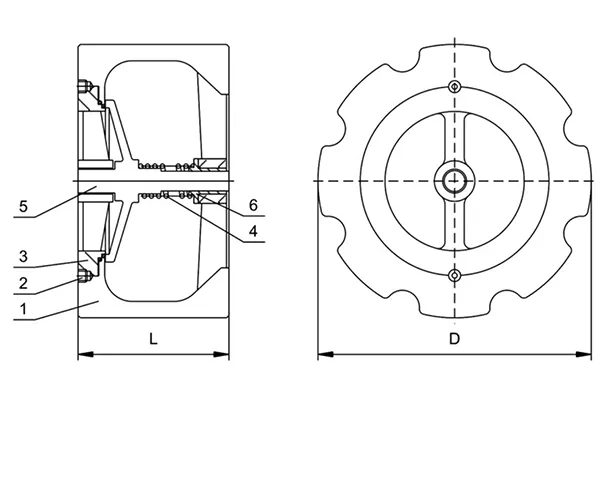Nov . 02, 2024 22:24 Back to list
os & y gate valve
Understanding the OS&Y Gate Valve An Essential Component in Fluid Control Systems
Understanding the OS&Y Gate Valve An Essential Component in Fluid Control Systems
One of the defining features of the OS&Y gate valve is its unique construction. The valve’s stem is located outside the valve body, allowing for easy access and operation. This design not only provides a clear visual indication of whether the valve is open or closed but also enhances maintenance efficiency. The yoke, which supports the stem, is bolted to the valve body, providing additional stability and strength, particularly in high-pressure applications.
os & y gate valve

Operating an OS&Y gate valve is straightforward. Turning the handwheel raises or lowers the gate, effectively controlling the flow. When the gate is fully raised, the valve is open, allowing fluid to pass through with minimal resistance. Conversely, when the gate is lowered, the flow is obstructed, and the valve is closed. This design ensures that the OS&Y valve can provide a tight seal, preventing leaks and ensuring safety in various applications.
The OS&Y gate valve is commonly used in fire protection systems, where reliable and quick access to water supply is crucial. When firefighters require water, these valves can be operated quickly, enabling effective response to emergencies. Furthermore, the ease of maintenance associated with the OS&Y design means that fire protection systems can be kept in optimal condition, ensuring availability when needed most.
In conclusion, the OS&Y gate valve is an indispensable component in many industries. Its efficient design, ease of operation, and maintenance make it a preferred choice for fluid control applications. Whether in civil infrastructure, manufacturing, or safety systems, understanding and utilizing the OS&Y gate valve contributes to effective management of fluids, promoting safety and efficiency in operations. As industries continue to evolve, the role of this valve will remain significant, adapting to meet the demands of modern fluid control systems.
Share
-
Reliable Wafer Type Butterfly Valves for Every IndustryNewsJul.25,2025
-
Reliable Flow Control Begins with the Right Ball Check ValveNewsJul.25,2025
-
Precision Flow Control Starts with Quality ValvesNewsJul.25,2025
-
Industrial Flow Control ReliabilityNewsJul.25,2025
-
Engineered for Efficiency Gate Valves That Power Industrial PerformanceNewsJul.25,2025
-
Empowering Infrastructure Through Quality ManufacturingNewsJul.25,2025